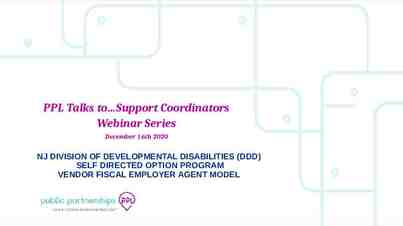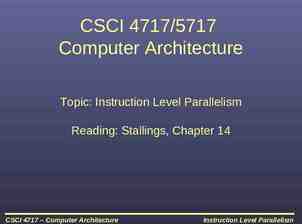Best Practices to Reduce Your Risk of Developing a Cumulative Trauma
40 Slides909.10 KB
Best Practices to Reduce Your Risk of Developing a Cumulative Trauma Injury Special Emphasis on Employees Who are Young or Newly Hired 1
Disclaimer This material was produced under grant number SH-99053-SH0 from the Occupational Safety and Health Administration, U.S. Department of Labor. It does not necessarily reflect the views or policies of the U.S. Department of Labor, nor does mention of trade names, commercial products, or organizations imply endorsement by the U.S. Government. 2
Training Topics Reducing Risk of Cumulative Trauma Why focus on young and newly hired employees? What causes cumulative trauma, pain, and injury? How to keep yourself safe and healthy, especially if you are young or a new hire 3
Why Focus on Young and Newly Hired Employees? Reasons for Training 4
Who is Considered a Young Employee? 80 70 60 Age (years) Usually defined as up to 25 years old 50 40 30 20 10 0 18 19-20 21-25 26-30 31-35 36-40 41-45 46-50 51-55 56-60 61-65 66-70 71-75 Age Range of Typical Working Population 5
Who is Considered a “New” Employee? Usually defined as on the job for less than one year Represents about 20% of the workforce* * Bureau of Labor Statistics, 2020 10-14 years 15-19 years (11%) (7%) 20 years (11%) 5-9 years (20%) 12 months (20%) 3-4 years (18%) 2 years (6%) 1-2 years (7%) 6
Young Employees are More Likely to Get Injured “If you’re under 25, you’re more likely to get injured on the job than if you’re over 25.” More than 50% of accidents involving younger workers occur during the first six months on job 7
Why are Young Employees More Likely to Get Injured? Work-related reasons Lack of training and work experience Not prepared for job’s physical demands More likely to be given riskier jobs Misunderstand or are unaware of employee rights 8
Why are Young Employees More Likely to Get Injured? Individual perceptions and attitudes Feel invincible More likely to take risks or do activities without knowing the consequences Less-motivated to find out if an activity is risky More easily distracted Hesitant to ask questions L 9
Newly Hired Employees are More Likely to Get Injured Questions: Which new hires are more likely to get injured? On job for 1 month Males Young employees Recent immigrants or On job for 1 years or Females or Older employees or Established immigrants 10
Newly Hired Employees are More Likely to Get Injured Answers: Which new hires 4x! are more likely to get injured? On job for 1 month Males Young employees Recent immigrants or On job for 1 years or Females or Older employees or Established immigrants 11
Why are Newly Hired Employees More Likely to Get Injured? Not yet adjusted to the demands of the job Not yet learned how to do job in a way that lowers physical stress on the body More likely to develop symptoms of discomfort L 12
What Can Cause Cumulative Trauma, Pain, or Injury? Understanding how Injuries Occur 13
What are Cumulative Trauma Injuries? Acute injuries can occur following a single highimpact event vs. Examples: Cumulative trauma injuries build up over time Focus of this training Examples: Broken Bone Laceration L Elbow Soreness Back Pain 14
What Can Cause Cumulative Trauma, Pain, or Injury? Lifting heavy weight or exerting high forces L Examples: Lifting or Carrying Pushing or Pulling Exerting Strong Grips 15
What Can Cause Cumulative Trauma, Pain, or Injury? Lifting heavy weight or exerting high forces This is a risk factor because: Muscles generate the effort we need to perform a task The amount of effort needed depends on: The amount of weight / force handled, and The way that the weight / force exerted Muscle effort is usually much greater than the weight / force needed for the task Even small increases in weight / force or the reach to perform a task greatly increases the effort required Examples: Muscle Effort Light Close to Body Muscle Effort Heavy Close to Body Muscle Effort Light Far from Body 16
What Can Cause Cumulative Trauma, Pain, or Injury? Lifting heavy weight or exerting high forces This is a risk factor because: Muscles generate the effort we need to perform a task The amount of effort needed depends on: The amount of weight / force handled, and The way that the weight / force exerted Muscle effort is usually much greater than the weight / force needed for the task Even small increases in weight / force or the reach to perform a task greatly increases the effort required Examples: 15# 40# Lifting 40 lbs. close to the body 20# Lifting 20 lbs. midway from the body Lifting 15 lbs. at arm’s length from the body These lifting tasks each put about the same amount of stress on the back 17
What Can Cause Cumulative Trauma, Pain, or Injury? Working in awkward body postures Examples: Bending Forward Reaching Overhead Bending Wrists 18
What Can Cause Cumulative Trauma, Pain, or Injury? Working in awkward body postures Examples: Shoulders This is a risk factor because: Muscles become weaker as postures become more awkward Wrists 77% 75% 100% Amount of muscle strength: 100% 93% 60% 88% 83% 19
What Can Cause Cumulative Trauma, Pain, or Injury? Repetitively using the same body part Examples: Frequent Lifting Constant Reaching Rapid Use of Hands & Wrists 20
What Can Cause Cumulative Trauma, Pain, or Injury? Repetitively using the same body part This is a risk factor because: Over a period of time, the body has less ability to withstand the demands of the job if there is not enough recovery time 1 1 Amount of cumulative trauma that does not lead to injury Work Demands Tolerance Work Demands Tolerance 0 Series1 Work and Rest Periods of a Job, Over Time 0 Work Demands Tolerance Series1 Work and Rest Periods of a Job, Over Time 21
What are Symptoms of Cumulative Trauma? Indications of Wear and Tear on the Body 22
Symptoms of Cumulative Trauma Muscles Symptoms Weakness, fatigue Pain, tenderness Spasms Muscles generate force when they contract Likely locations: Back Neck There is a lot of blood flow to our muscles, so they can recover from injury very quickly 23
Symptoms of Cumulative Trauma Tendons Symptoms Dull ache that doesn’t go away Swelling, tenderness Discomfort when moving in specific ways Tendons connect all muscles to bones Likely locations: Shoulder Elbow Knee There is not much blood flow that flows to our tendons, so they can take a long time to recover 24
Symptoms of Cumulative Trauma Nerves (example: carpal tunnel syndrome) Signs of initial trauma Numbness and tingling in the hands Pain at night Nerves send sensations and impulses through the body Signs of longer-term trauma Weakness Problems holding objects Likely locations: Hand & Wrist 25
Symptoms of Cumulative Trauma Discs in the Back Initial trauma None! (nothing can be felt L Spinal Discs are the “shock absorbers” between vertebrae when damage first occurs) Longer-term trauma Disc damage affects nerves Pain going down the leg Numbness, tingling 26
How Do You Reduce Your Risk of Cumulative Trauma? Approaches to Protect Yourself from Injury 27
Lowering Cumulative Trauma Risk Reduce Muscle Effort & Stress on Body Examples: Get your body as close to the load as possible before picking it up “Lift with your legs, not your back” is not a good strategy if your knees cause you to lift with the load further away from your body When possible, straddle the load so that you can lift and handle it closer to your body 28
Lowering Cumulative Trauma Risk Reduce Muscle Effort & Stress on Body Examples: L Carry items in front of the body Allows both sides of the body to equally support the load L When possible, balance items handled between sides of the body Allows both sides of the body to equally support the load Divides effort between individuals Ask for help when lifting heavy objects 29
Lowering Cumulative Trauma Risk Reduce Muscle Effort & Stress on Body Examples: Get your body as close to the load as possible before picking it up For heavy loads, make more trips with less weight, when possible Less reaching to pick up a load is safer for the back and shoulders This practice is nearly always safer for the back 30
Lowering Cumulative Trauma Risk Work in Stronger Body Postures Examples: Adjust the height of your work Adjust the position of your work Be creative in finding ways to work while standing in an upright position Angle your work to reduce wrist bending 31
Lowering Cumulative Trauma Risk Work in Stronger Body Postures Examples: Push wheeled containers rather than pull them Arrange most-used items to be within arm’s length Allows both sides of the body to equally exert the effort needed Reduces overreaching and stress on the shoulders 32
Lowering Cumulative Trauma Risk Recover from Repetitive Tasks during Work Periodically do simple repetitive activities with your nondominant hand Provides “micro” rest breaks for the mostused body parts Task done by opposite side of the body 33
Lowering Cumulative Trauma Risk Recover from Repetitive Tasks during Work When possible, create ways to spread out highdemand activities among other required tasks Intermixing easier physical work within higher-effort tasks provides more opportunities for rest 34
Lowering Cumulative Trauma Risk Other Ways Prepare for job tasks, by warming up your body Back: Do you bend, lift, push, pull? L L Arms: Do you reach? Hands: Do you grip, type, perform rapid movements? L 35
Lowering Cumulative Trauma Risk Other Ways Communicate your job improvement ideas to others you work with Coworkers Supervisor L L L L L L As a young or newly hired employee, you may notice ways to make the work easier that longer-term employees have not considered 36
Lowering Cumulative Trauma Risk As a Young Employee Do not be afraid to ask questions about job ? Obvious risks to others may not be obvious to you Find a more-senior employee to provide guidance They can offer job tips not covered in training Reduce exposure to possible distractions Working safely may require more attention than you are used to talk Tal K L kTA L STOP 37
Lowering Cumulative Trauma Risk As a Newly Hired Employee Be clear about all workplace safety risks Supervisor might assume you know these from past jobs Report discomfort / pain that does not go away New-hires often do more physically demanding jobs Be sure you fully understand all safety signs and rules Are they provided in your preferred language? 38
Take-Home Messages 39
What to Remember Young and newly hired employees are at an increased risk of injury when starting a new job Cumulative trauma from work can cause injuries that are painful and long-lasting Most cumulative trauma injuries have recognizable symptoms and should be reported All employees have the ability to use work techniques that reduce their injury risk 40













































